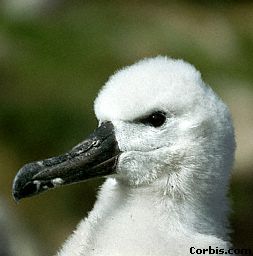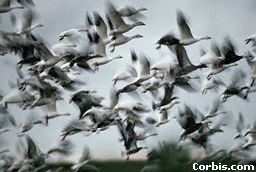One of the great wonders of the north are its beloved arctic animals. The Arctic Circle is home to hares, wolves, foxes, bears, whales, dolphins, sharks, moose, musk ox, seals, walruses, birds, and deer - to name only a few. Of about 4000 species of land mammals on Earth, only about 48 land mammal species live in the Arctic. These animals are fascinating not only in that they are able to survive in the harsh climate, but also in their various ways of adapting and surviving from season to season. Many of the land animals who stay in the arctic climate year-round turn white in the winter to camouflage themselves, or hibernate during the dark and cold winter months. Other animals migrate south for the winter.
The Arctic is home to some of the most admired, interesting, and revered birds in the world - among them the albatross, bald eagle, peregrine falcon, puffin, snowy owl, and of course, the penguins. These birds find solitude in the north, where they are not so often disturbed by human interference.
Still, the animals that live here cannot escape the effects of the rest of the Earth on their environment. The Arctic Climate is warming three to five times faster than the rest of the world. Although arctic animals may be able to adapt to a gradual change, it is difficult for them when the climate changes quickly. Two primary examples of this are the polar bear and the walrus.
The polar bears of the Hudson Bay area depend mainly on the ringed seals that live on the ice as their major food source. Each year, the ice in the bay breaks up earlier. This shortens the bears' hunting season, and is a starvation threat. Although there has not been a significant decline in polar bear population, the weight of the bears has dropped, and fewer cubs are being born. They are seeking alternate sources of food, including larger and more dangerous prey. This situation is being seen in bears throughout the arctic. Hungry bears potentially mean more trouble for their human neighbors, since they may wander into communities in search of food.
In the Northern Polar Ice Cap, the edge of the ice is retreating in some places by hundreds of kilometers. When the ice retreats, the edge is over deeper water, which makes it harder for animals like the walrus to dive to the bottom of the sea for food. Thinning ice is also a breeding problem for the walrus, since each of them weighs a matter of tons. If the walrus is threatened, so are the indigenous people who live along the Bering and Chukchi Seas between Alaska and Russia, who partly depend on the existence of the walrus for survival.
Although there are many factors affecting the climate of the Earth, global warming is certainly a culprit, and should not be ignored by people living in more moderate climates. Many of the animals in the south and central parts of the world summer in the arctic, and warming trends have the numbers of many species on decline. In the end, this affects all of us. |











